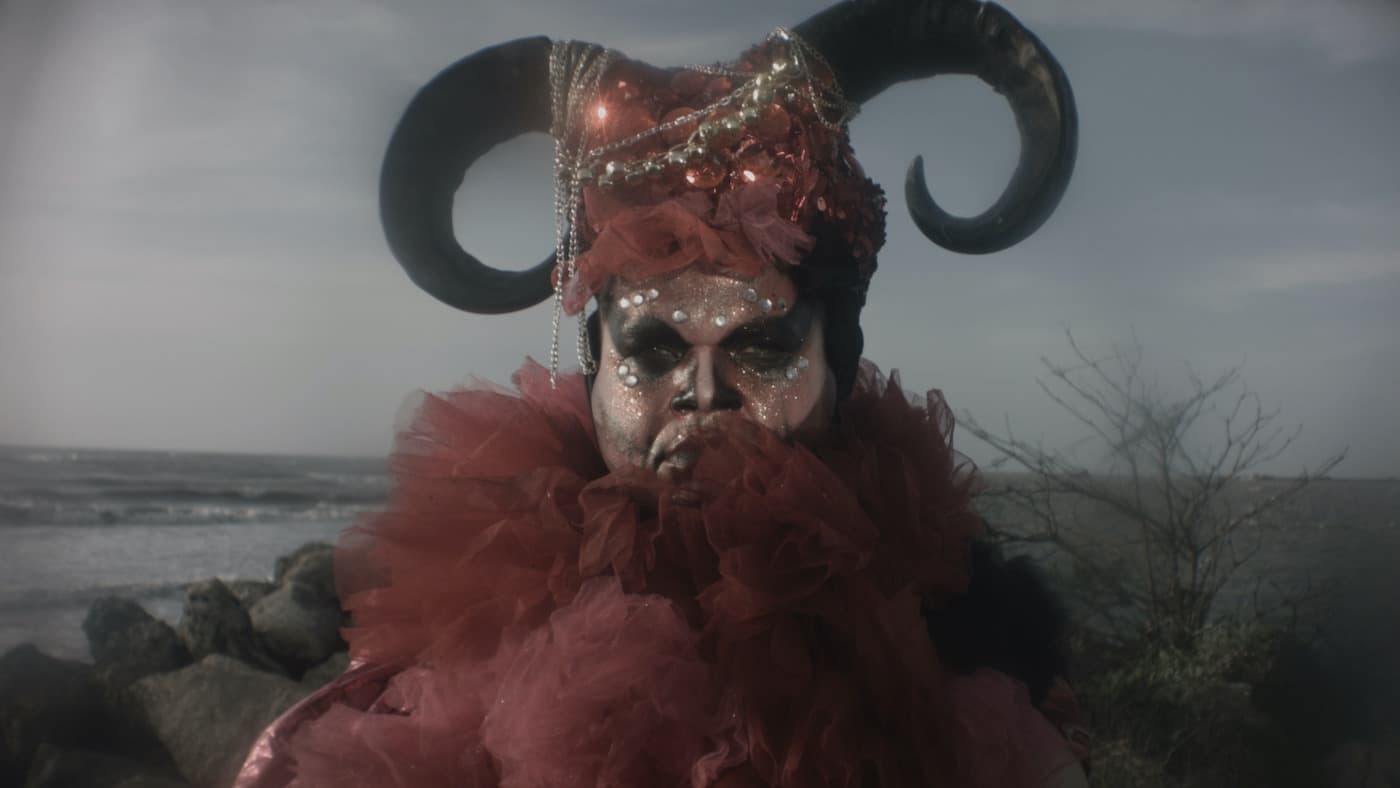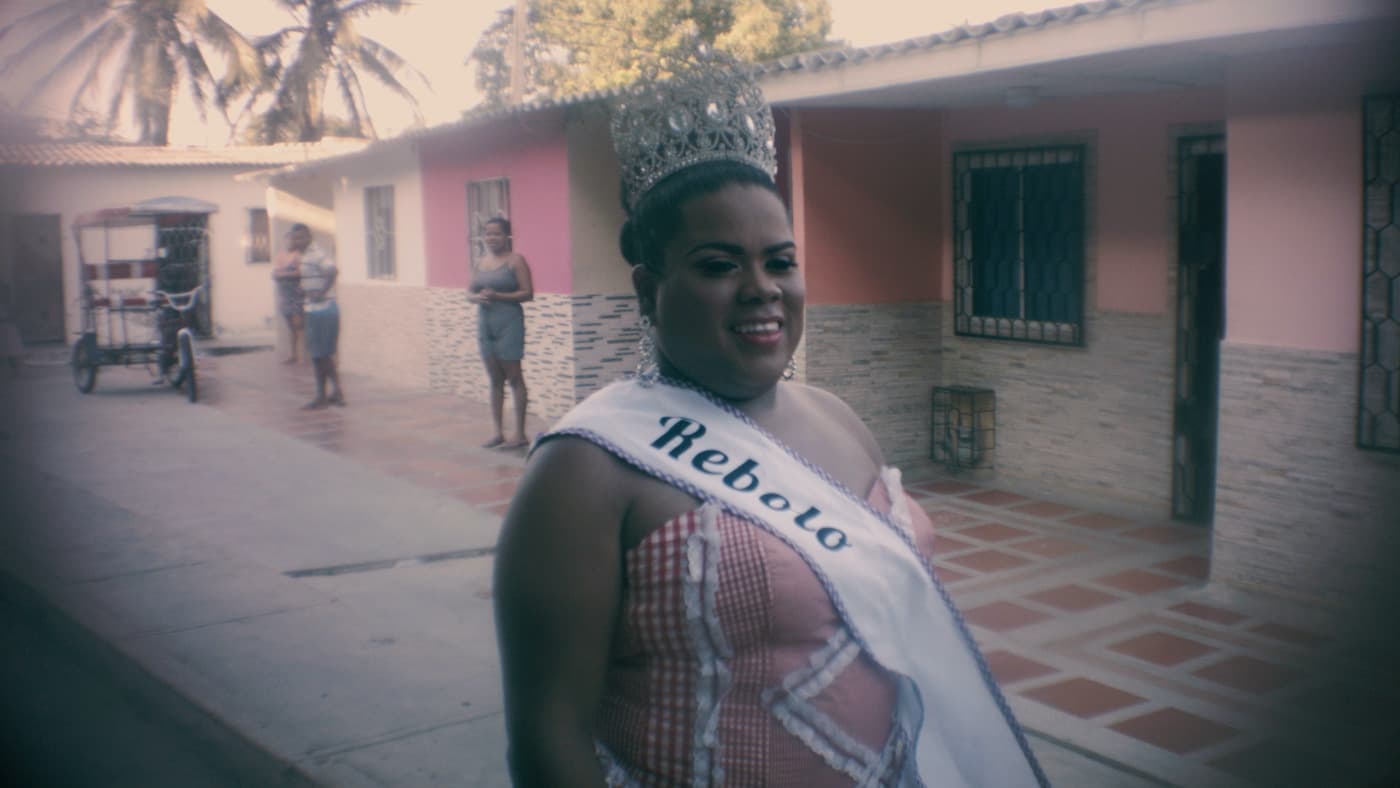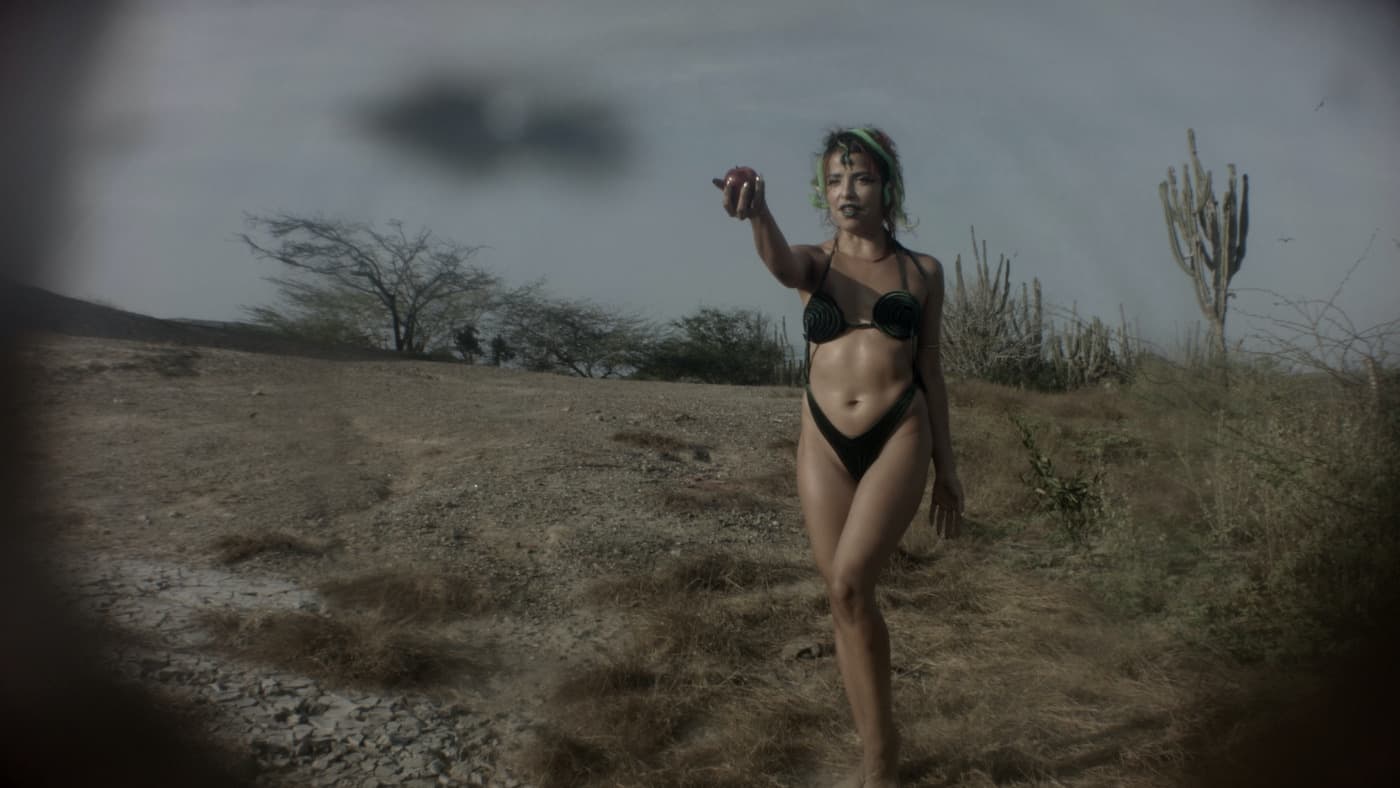Carlos Maria Romero aka Atabey Mamasita
Viewing Suggestions: to improve the quality of viewing please use external speakers or headphones, and play in full screen.
(ES) Sugerencias para mejorar la visualización: usar parlantes externos o audífonos, y reproducir en pantalla completa.
Nave means vessel in Spanish. As in the vessels that brought Europeans to Abya Yala* in the 1500s. As in the vessels used to transport enslaved people out of Africa and into the Caribbean. In Colombian slang, nave refers to technological devices (like computers, but a bike too), and to their speed, shininess or futuristic look. It refers to their capacity to “shift space”.
As magical thinking is still very much part of the culture of the north of the country, and a history of imperialism is still much alive, so is the capacity of imagining dignifying alternatives to this world too. In movements like psicodelia and Afrofuturism, science fiction narratives combine with ancestral notions of non-linear space-time. Here, affective relations have been forged between metropolitan people of the continent, Africa, to Indigeneous cultures, and through history, to pre-Columbian times. This was especially the case in the 1970s, when liberation movements across the globe were on the ascendant. The forms of ‘travelling’ offered by these movements have contributed to the processes of self-affirmation so necessary for colonized peoples; they help to replenish and (re)imagine their worlds.
During Carnaval in Barranquilla (the largest event in northern Colombia) one can palpably feel forms of anti-hegemonic knowledge and resistance. They are present in performance traditions that momentarily subvert calcified social order and enact a multiplicity of worlds. One of the most emblematic technologies of Carnaval is the cumbia: born out of the African drums and emotive singing that gave an outlet to the oppressed, and the spiritual activation of Indigenous flutes and maracas, cumbia is a never-ending centripetal somatic spiral that holds people together. In theory, one can tune into these technologies. In reality, their potential is eroded by spectacularization, commercialization, and institutionalisation. Carnaval is now cynically exploited as an emblem of Colombia’s supposed equality and racial democracy.
In 2021 it was forbidden to congregate. Carnaval was meant to happen mostly online or on tv. Those who met did so “illegally” (consistent with the long-standing stigmatization of Caribbean culture as uncivilized, dangerous and/or criminal). By characterizing the continued practice of Carnival tradition as ‘civil disobedience’, the ruling white/mestizo class was able to again blame the lower classes for all its problems, both those related and those unrelated to the pandemic.
La Nave was filmed against that backdrop, created in the grey area of international and local restrictions, and the space made by shifting them. We considered risks, and gained consent from those we portray. La Nave features people from different sectors of coastal society, all of whom are all cultural organizers, artists and activists in their own way. All have existing links to Carnaval, with most of them being part of, or collaborating with the group ‘The Ship of Fools’ (La Navx de lxs Locxs). This collective understands that resistance is the most valuable part of the festivities.

The name of this group evokes a medieval ship full of ‘dysfunctionals’ who are leaderless whilst also not capable of governance. The film seeks to represent the group’s non-hierarchical and liberatory forms of autonomy, equality, community building and collective action. We hear how some of its members link performative and political representation with ecstatic celebration practices. For them, this combination can raise and sustain revolutionary consciousness and action that can persist beyond the specific frame of the ‘carnivalesque’ moment.

Cultural traditions that decolonize are part of Carnaval’s DNA. The symbolic and actualising forces encoded in those traditions inspire resistance in, and bring joy to, people who long for more just times. They 'travel' beyond the geographical limits of the Caribbean coast of Colombia, fostering solidarity and connection between people engaged in different struggles on disparate continents. The commonalities between them seem to become clear when people share spaces and their histories; they have similar ways of thinking and actioning in origin, benefiting the same kind of people everywhere. They can’t be dismantled separately.
Those struggles are far from having ended in Colombia. Since late April, when a general strike began, protests have continued daily as people demand fundamental changes to how they are governed. Inspired by the courage and achievements of people in Chile, the USA, and Hong Kong, Colombians from all minorities have come together to demand an end to the terricide and genocide to which they are subjected. The same forces and technologies that manifest in the traditions of Carnaval are embodied in the protestors in confrontation with the forces of the state.
La Nave is more like the ship full of indigenous Zapatistas leaders (EZLN) sent in May to Europe with the aim of reinforcing relations between social and environmental movements to raise anti-capitalist awareness. It’s not to be confused with Plato’s ‘Ship of State’ in which absolute power is granted to those with merit to govern (merit tending to be connected to those with the capacities that serve self-preserving colonialist interests: saviors, captains, dictators, emperors). The film’s vessel is one full of lucid and fearless people making an upside down world, in which all (historically oppressed) worlds can and have a right to exist. Aboard La Nave, directioning is a collective, decentralizing, eternal dance ever expanding its reach and partakers.
*Abya Yala or ‘The land in its full maturity’ as the Guna Dule and current anti-colonial movements call the continent.

- Concept / direction:
- Carlos Maria Romero
- Camera, film adviser:
- Giuliano Cavalli
- Co-Editor:
- Jorge Mario Suárez Urariyú
- Editing Support:
- Lene Volhardt
- Technical support:
- James Irwin
- Sound engineering:
- Santiago Latorre
- Sound recordist:
- Henry Burgos Luna
- Music:
- La Perla "Bruja"
- Millo de Chorrera
- Production manager:
- Daniela Franco
- Production support:
- 'Jimmy' Correa Jaramillo
- Research adviser:
- Francisco Gonzalez Rosales
- Text and subtitles editor:
- David Edgar
Appearing in the film
- Kogi people:
- Félix Zarabata
- Ignacio Zarabata
- Mariano Chimunquero
- Juan de Jesús Chimunquero
- “Travesti” archive reseracher:
- Danny González Cueto
- Joselito’ widows:
- Hanner Sánchez de Alba
- Carlos Maria Romero
- Rubén Barrios
- Lea / Leonardo Charris Pertuz
- Gay Queen of Rebolo:
- Sheyla Campbell Salas de los Monteros
- Makeup artist:
- José Alejandro Rosales Acosta
- Champeta dancer:
- Luis Fernando Sarabia Gonzalez
- Performance artist:
- Hellvira / Elvira Lavey Dracul
- Club owner KZ Son Palenque:
- Ramón Cardona Reyes
- Poet:
- Faustino Torres Valdez
- Radio host / Fundacion Lokassa:
- Sidney Reyes Reyes
- Linguist:
- Manuel Hernández Valdez
- Harlequin Devil:
- Ruvén Suárez Urariyú
- Millo de Chorrera:
- Alfredo Molina Molinares
- Ulises Molina Molinares
- Alvaro Hernández Echeverria
- Anselmo Molina Molina
- Anselmo Molina Hernandez
- Janer Hernandez Rodriguez
- La Nave de Lxs Locxs’ organizer:
- Francisco Gonzalez Rosales
- Dancers:
- Fiorela Calderón Matera
- José Yeye
- Neighbors:
- Keyla Masiel Casallas Caceres
- Concepción Miranda Herrera
Filmed in Colombia in 2021 in Barranquilla at Barrio Rebolo, Bellas Artes - Universidad del Atlántico, Barrio Abajo, Barrio La Chinita, KZ Son Palenque, Bocas de Ceniza; and at Reserva Agroforestal ‘La Tigra’, Vereda Orinoco, Sierra Nevada de Santa Marta, Magdalena, and Volcán del Totumo, Santa Catalina Bolívar.
Special thanks to La Nave de Lxs Locxs, Fundación Cámara Oscura, Colectivo TraNsmallo, Universidad del Atlántico, La Casa Verde, Edificio Lucca 52, Adelaida Chirivi, Marcela Useche, Jarlath Downey, Sam Causer and Vanessa Maria Romero.
Done with the kind support of the Postgraduate Studies in Art at Royal Academy of Arts, London.